30 Low Maintenance Landscape Ideas for Easy Outdoor Living
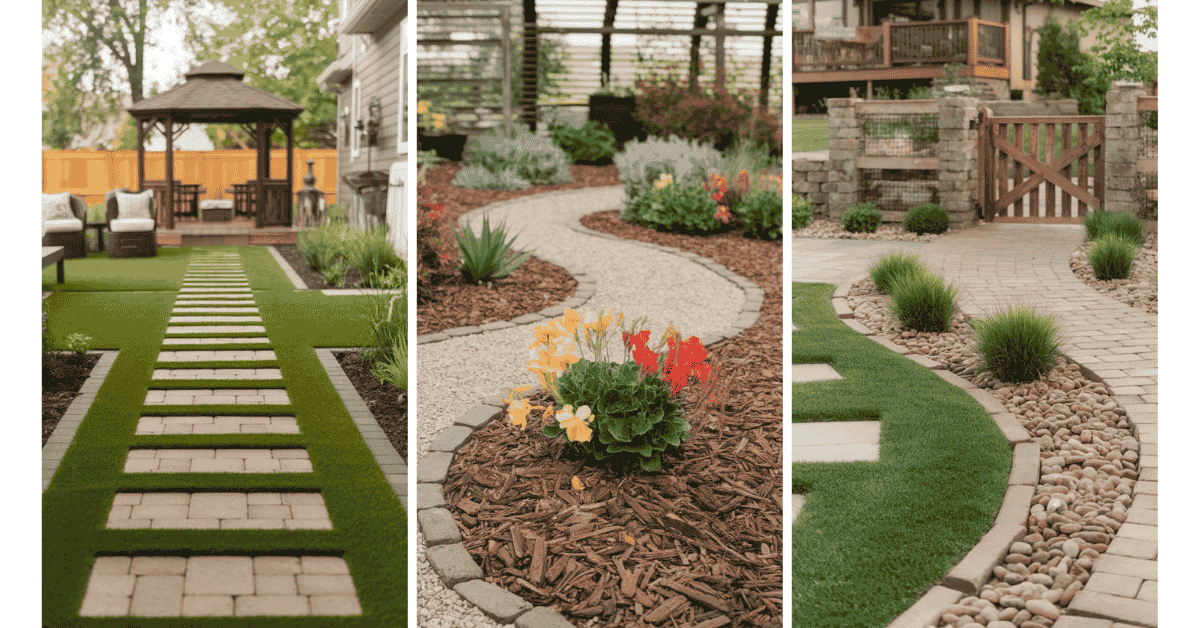
Looking for a beautiful yard that won’t take over your weekends? Low maintenance landscaping is the perfect solution to create an inviting outdoor space that’s easy to care for, cost-effective, and eco-friendly.
By incorporating smart design choices, you can reduce the time and effort spent on upkeep without sacrificing style or curb appeal.
Whether you’re a seasoned gardener or completely new to outdoor design, you’ll find plenty of inspiration to suit your needs and preferences.
From drought-resistant plants and efficient irrigation systems to stylish hardscaping ideas, these tips will help you transform your landscape into a stunning, functional space with surprisingly little effort.
Discover 30 practical and stylish ways to achieve a show-stopping yard while spending more time enjoying it and less time maintaining it..
30 Low Maintenance Landscape Ideas
1. Swap Grass for Hardscape
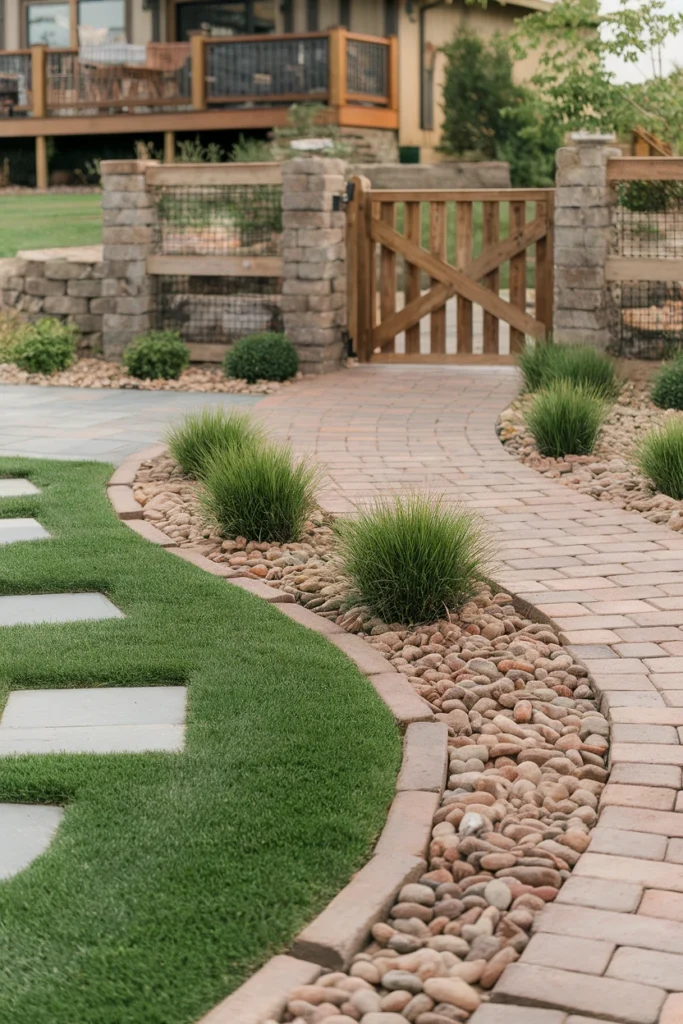
Replace portions of your lawn with pavers, brick, or decorative stone to create functional and visually appealing spaces.
Hardscaping is perfect for walkways, patios, or cozy seating areas, providing a low-maintenance solution that eliminates the need for mowing or watering.
These durable surfaces are highly customizable, allowing you to complement your yard’s aesthetic while reducing yard work, saving water, and cutting down on maintenance costs in the long run.
2. Plant Easy-Care Perennials
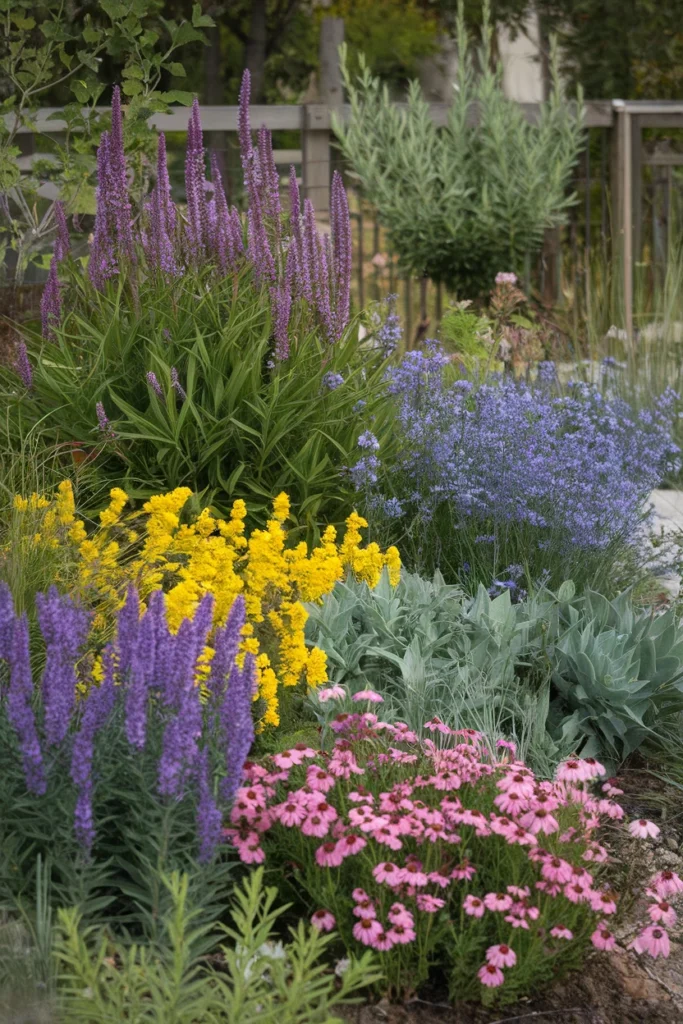
Opt for sturdy perennials like pasqueflower, penstemon, sedum, or yarrow for a garden that thrives with little effort. These plants are drought-tolerant, flourish in poor soils, and reappear every year with minimal attention.
They not only add vibrant colors and unique textures to your beds and borders but also attract pollinators like bees and butterflies, boosting your garden’s ecosystem while keeping upkeep at a minimum.
3. Go Native

Native plants, adapted to your region’s specific soil and climate conditions, are a smart choice for a low-maintenance landscape. They require less water, fertilizer, and pest control, making them eco-friendly and cost-effective.
Additionally, native species provide essential habitat and food for local wildlife like birds, butterflies, and beneficial insects.
For the best plant options for your area, consult your local extension office or native plant nurseries—they can recommend the top picks to suit your region’s environment.
4. Install Artificial Turf
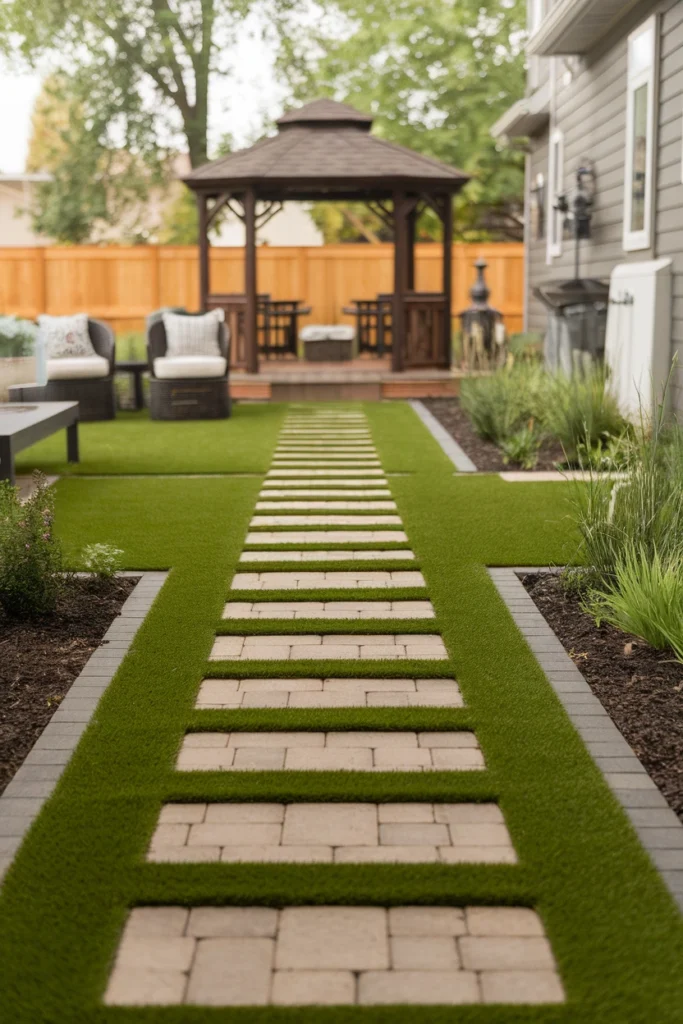
Modern artificial turf has come a long way, offering realistic, lush grass that’s soft underfoot and perfect for year-round use.
It eliminates the need for mowing, fertilizing, or watering, making it ideal for small yards, high-traffic areas, or spaces used for children’s play or pets.
With drainage systems that prevent waterlogging and materials designed for durability, artificial turf is a hassle-free way to maintain a green lawn without the upkeep.
5. Choose Evergreen Plantings
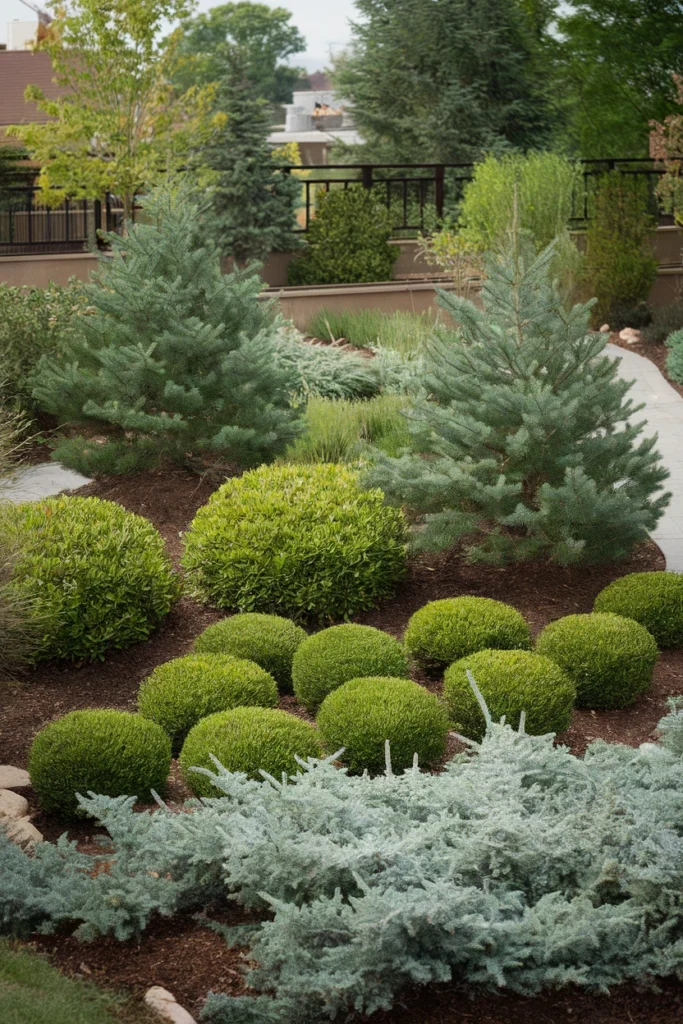
Evergreen shrubs and trees are an excellent solution for year-round color and structure in your garden. Varieties like boxwood, dwarf spruce, and juniper require minimal maintenance while providing a polished look.
Dwarf and compact evergreen options reduce pruning needs and fit well in small spaces or borders.
These hardy plants also act as year-round windbreaks and privacy screens, adding both beauty and functionality to your outdoor spaces.
6. Use Ornamental Grasses
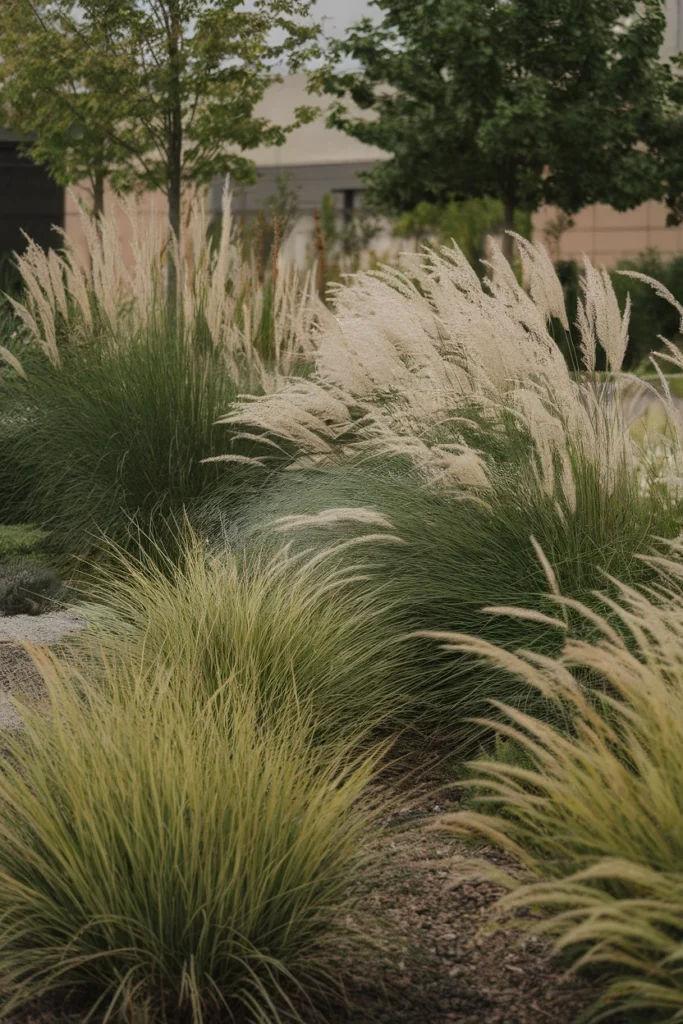
Ornamental grasses such as carex, hakonechloa, and fountain grass bring dynamic movement and texture to your landscape. Their feathery plumes and delicate blades sway beautifully in the breeze, offering visual interest through all seasons.
These grasses are incredibly hardy, deer-resistant, and drought-tolerant, making them a low-maintenance choice.
Even in winter, their dried stalks add a rustic charm, ensuring your garden looks appealing year-round.
7. Try Groundcovers Instead of Grass
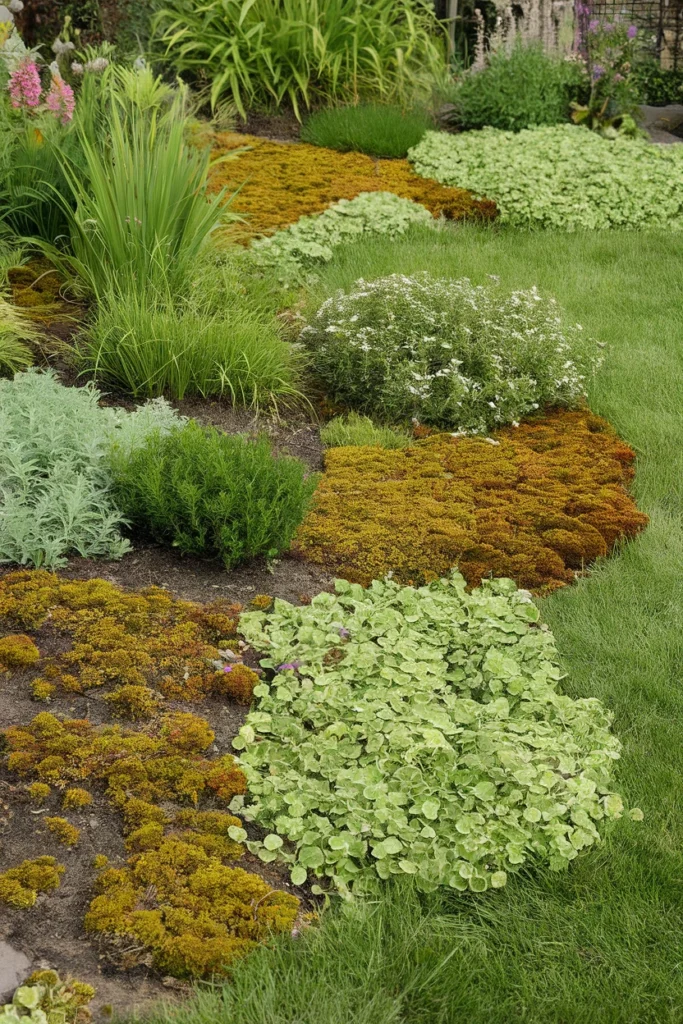
Replace traditional turf with groundcovers like low-growing clover, creeping thyme, New Zealand brass buttons, or moss for a lush, green yard that requires little attention.
These “living carpets” are low-maintenance, need little mowing, and form dense mats that naturally suppress weeds.
Many groundcovers also produce small flowers, adding color and charm to your outdoor space while being kinder to the environment than thirsty grass lawns.
8. Incorporate Mulch for Low Weed Pressure
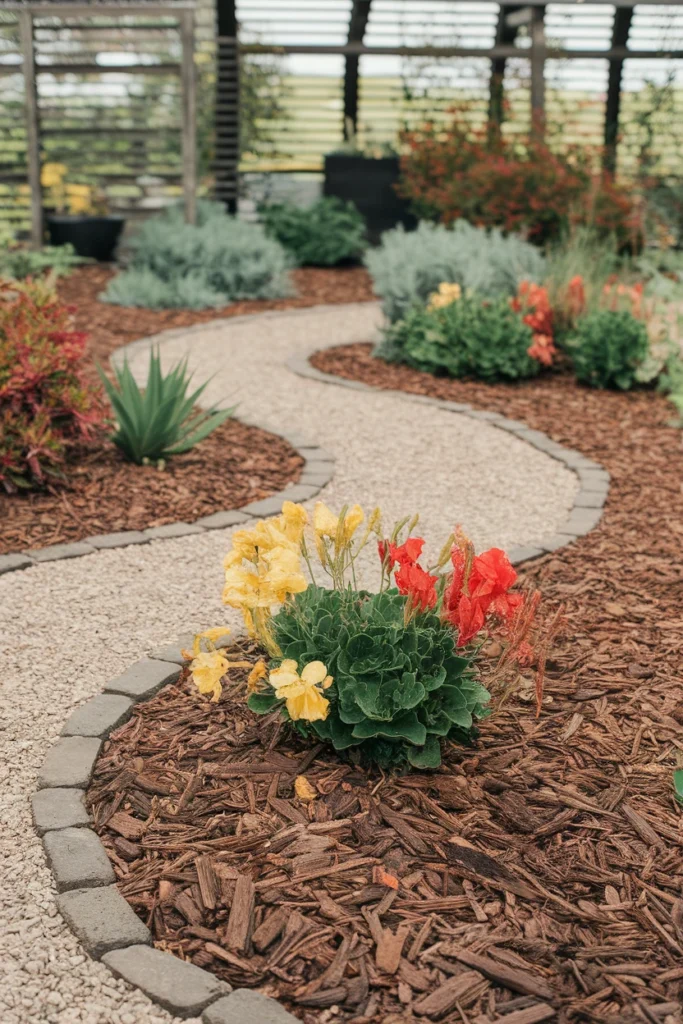
A thick layer of organic mulch, such as wood chips or bark, or inorganic options like gravel and river rocks, is a simple yet effective way to suppress weeds and conserve soil moisture.
Organic mulches slowly break down over time, enriching the soil with nutrients and promoting healthy plant growth.
Mulch not only reduces the need for frequent weeding but also creates a clean, finished look for your garden beds and pathways.
9. Automate Watering
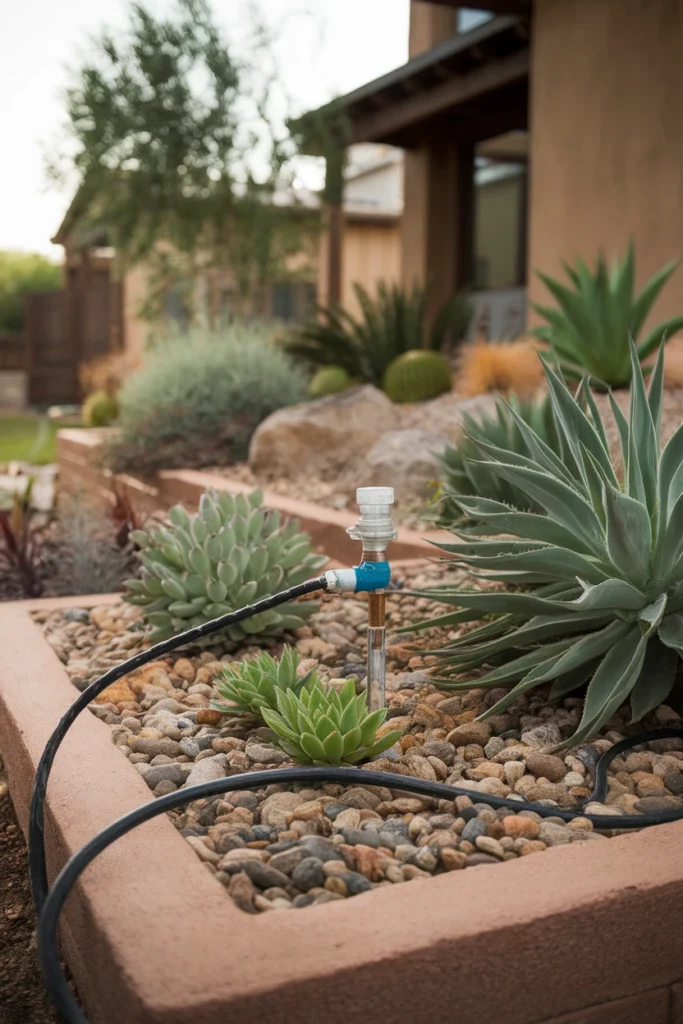
Save time and water by installing a drip irrigation system or soaker hoses equipped with automatic timers. These systems deliver water directly to the roots of your plants, minimizing waste and ensuring efficient hydration.
Automated watering solutions take the guesswork out of plant care, allowing you to maintain healthy, thriving greenery with minimal manual effort.
They’re especially useful during dry spells or for vacationing gardeners who want peace of mind.
10. Build with Durable Materials
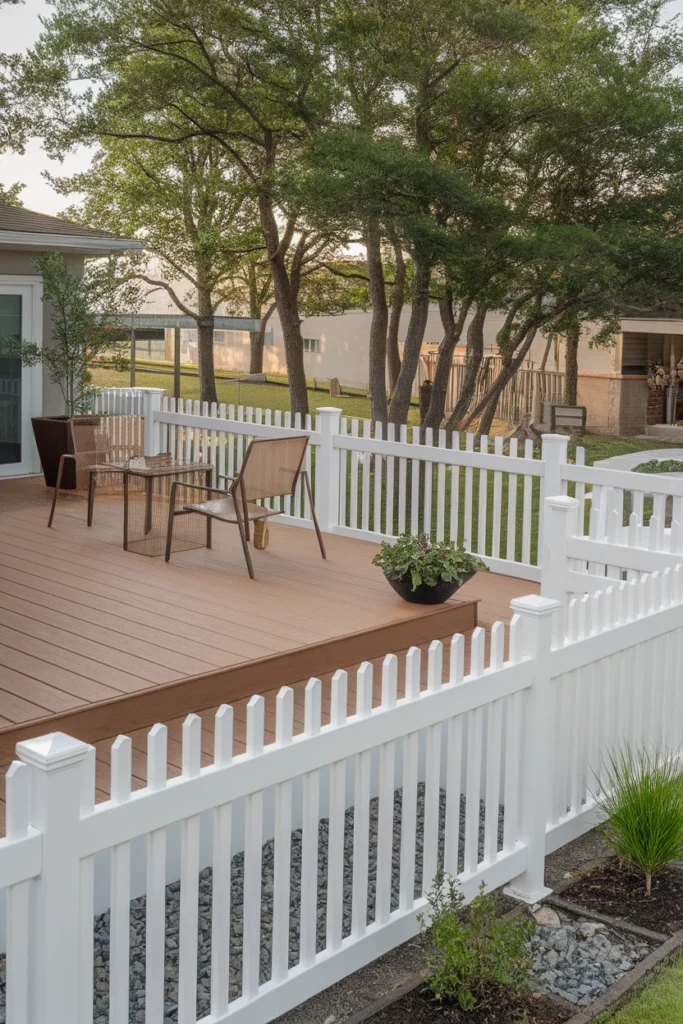
When choosing materials for your deck and fencing, opt for composites, ipe wood, or vinyl instead of traditional pressure-treated pine.
These materials are specifically designed to withstand harsh weather conditions, resist pests like termites, and avoid problems like warping or rotting over time.
While they may have a higher upfront cost, their durability means you’ll save on repairs and replacement in the long run.
Plus, they require far less maintenance, freeing up your time for enjoying your outdoor space.
11. Grow Self-Sufficient Plants
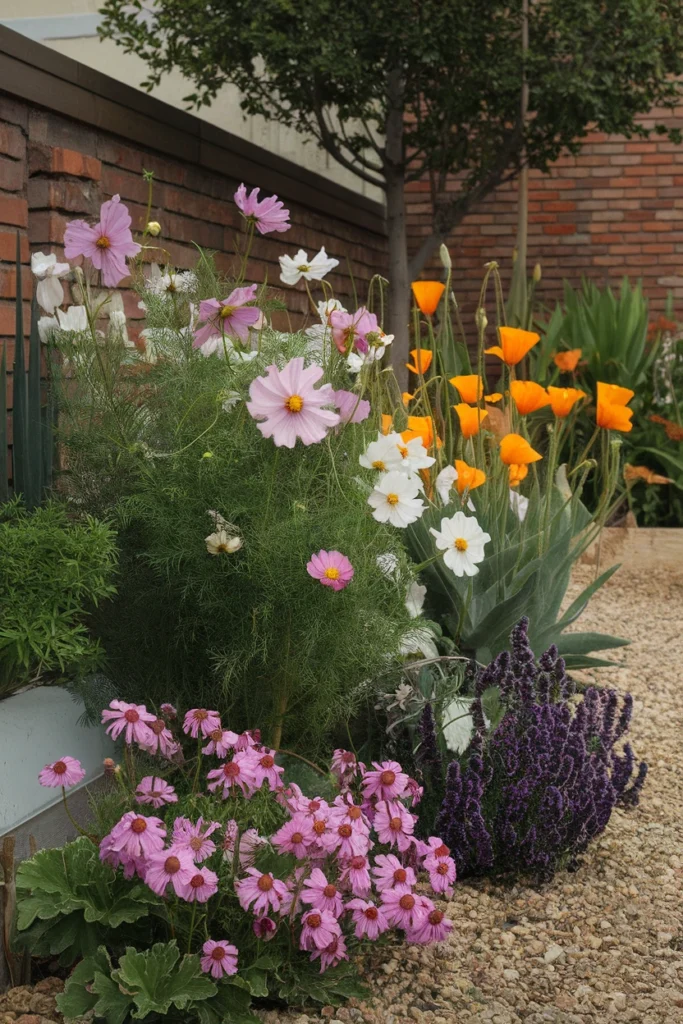
Pick plants that can thrive and multiply on their own, such as cosmos, California poppies, or hardy geraniums. These species are known for their ability to self-sow or spread naturally, coming back year after year without the need for constant replanting.
They’re an excellent choice for filling bare spots in your garden, creating a lush, full look with minimal effort.
By selecting self-sufficient plants, you’ll reduce both work and costs while enjoying a vibrant garden.
12. Lay Weed Barriers

Tired of spending hours pulling weeds? Consider placing landscape fabric beneath your gravel paths or mulch beds to block weeds from sprouting.
This barrier works by cutting off sunlight and preventing weed seeds from germinating. For added effectiveness, cover the fabric with a thick layer of mulch or stones.
By laying down weed barriers, you’ll significantly cut down on the time and effort spent maintaining your garden beds each season.
13. Add Raised Beds
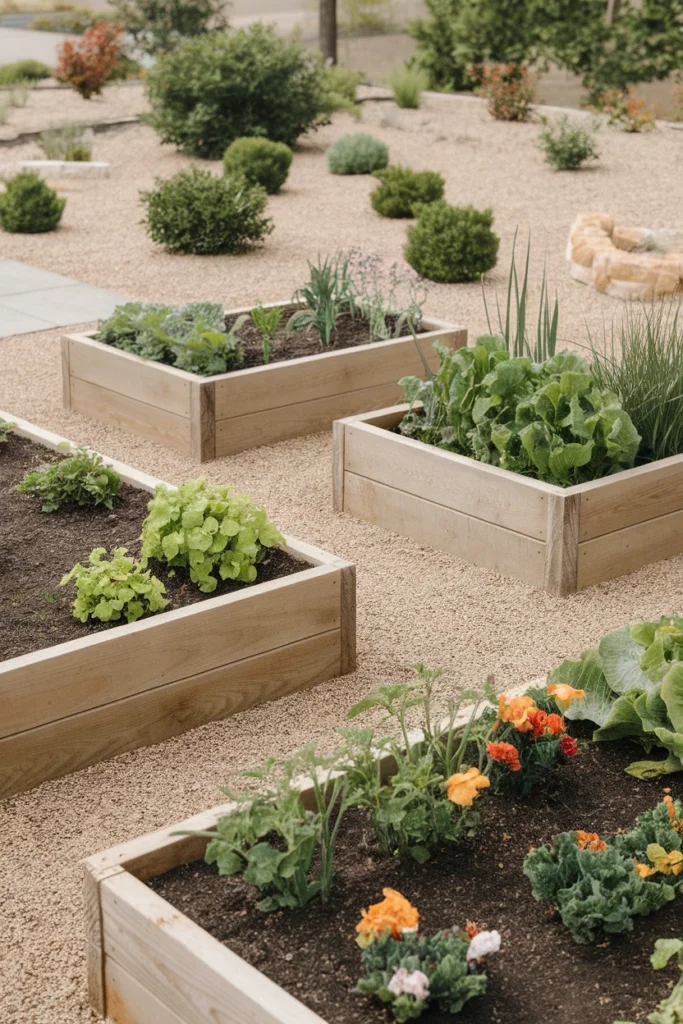
Raised garden beds are a practical option for keeping your garden tidy and organized. They help define the edges of your garden while making planting, weeding, and harvesting far easier on your back and knees.
Construct your raised beds from natural stone, composite materials, or weather-resistant wood to ensure they last for years with little maintenance. With raised beds, your garden can stay neat, productive, and visually appealing.
14. Select Low-Mess Trees
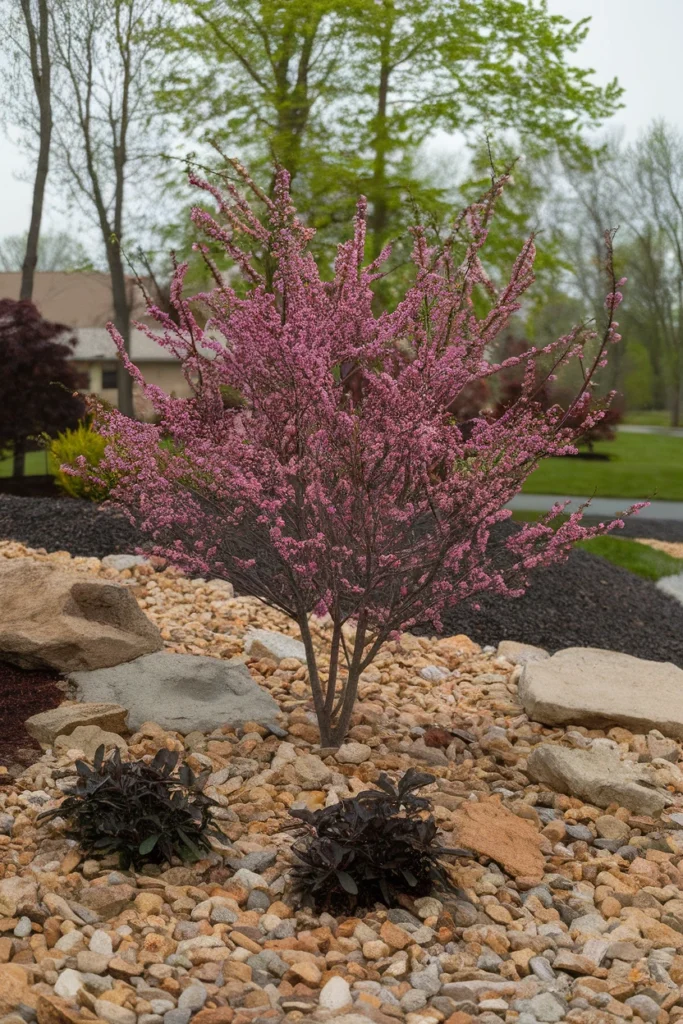
When planting trees for shade or decorative purposes, choose varieties that minimize cleanup and maintenance.
Options like redbud, Kousa dogwood, or dwarf Japanese maple offer stunning flowers, foliage, or shade without dropping large limbs, heavy debris, or excessive leaves.
These trees require less pruning and cleanup, saving you time while still enhancing the beauty of your landscape.
15. Use Self-Watering Planters
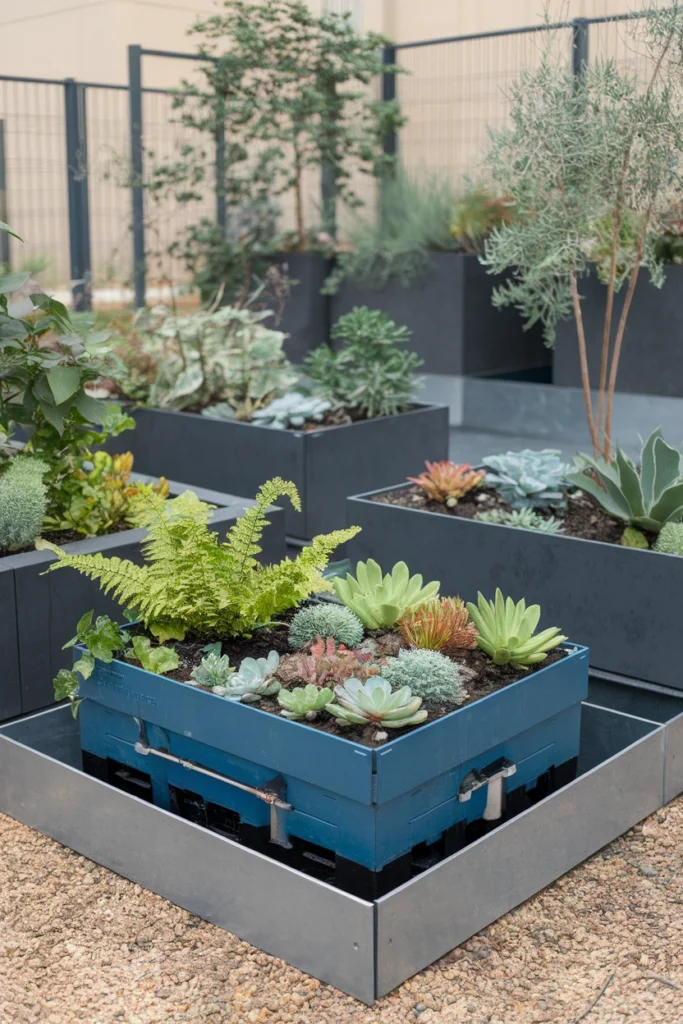
If you have areas where frequent watering isn’t feasible, such as patios, entryways, or porches, self-watering planters are an ideal solution.
These pots are equipped with reservoirs that allow plants to draw water as needed, reducing the frequency of watering and ensuring your plants stay hydrated even on hot days.
They’re particularly useful for busy gardeners or those who travel often, keeping your greenery vibrant with minimal effort.
16. Repeat and Group Plants
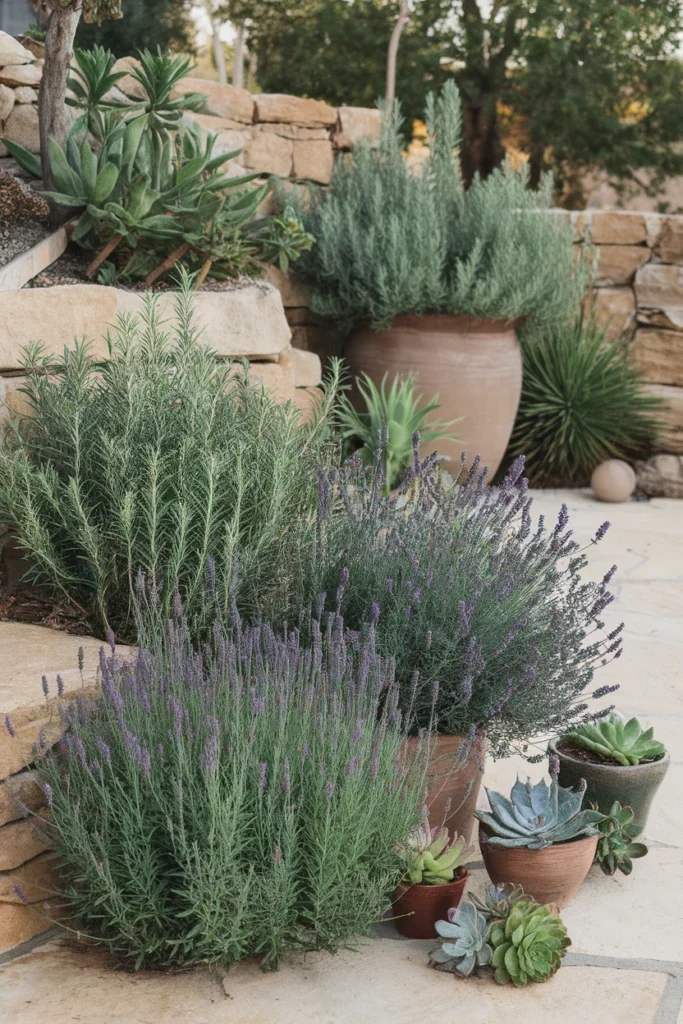
To create a cohesive and visually appealing landscape, stick to plants that thrive in your specific environment and repeat them in clusters or odd-number groupings.
Mass planting not only makes your garden look more unified and intentional but also simplifies maintenance by reducing the variety of care routines you need to manage.
By focusing on fewer species, you’ll spend less time learning and more time enjoying your garden.
17. Opt for Drought-Tolerant Succulents
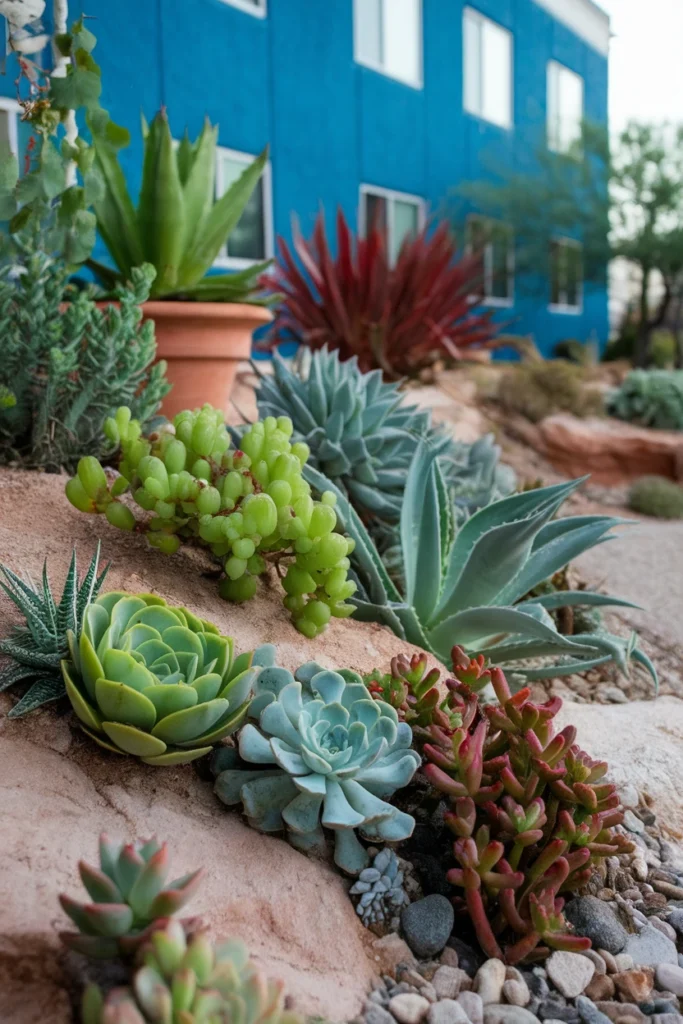
Drought-tolerant succulents like sedum, stonecrop, and certain agave varieties are perfect for adding texture, color, and structure to your garden with minimal upkeep. These plants require very little water, making them ideal for dry regions or rock gardens.
Their unique shapes and vibrant hues can serve as focal points in containers or ground cover, offering natural beauty with almost no fuss.
18. Attract Natural Pest Control
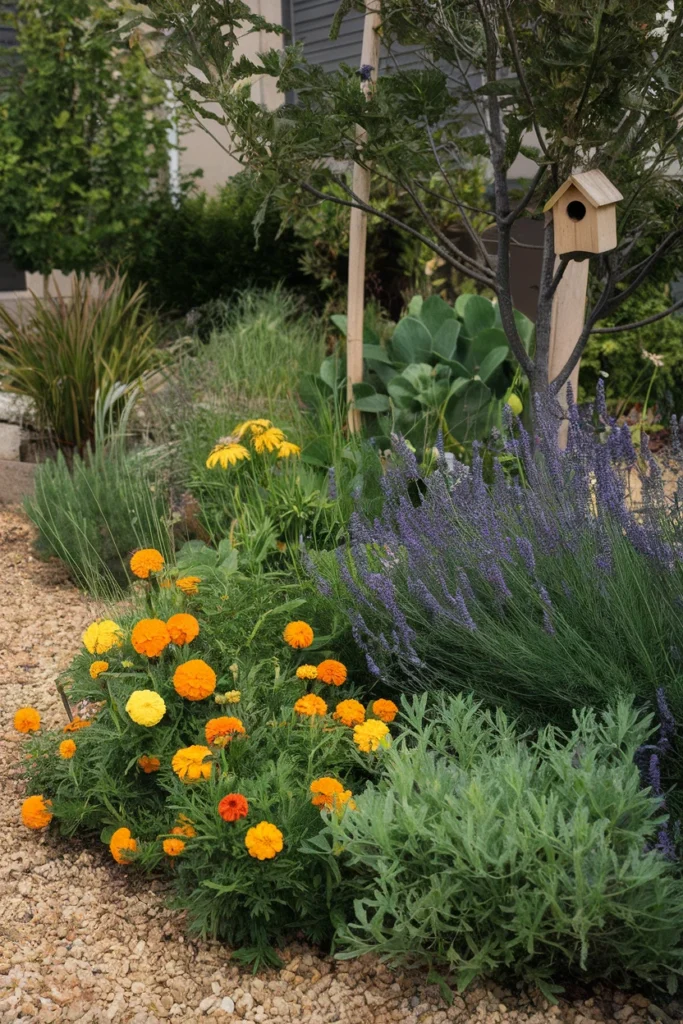
Invite nature’s helpers into your garden by creating habitats for beneficial birds and insects. Install birdhouses to attract predators like bluebirds or barn owls, which can help control pest populations.
Additionally, incorporate plants like marigolds, lavender, or dill that attract helpful insects like ladybugs and lacewings.
By fostering natural pest control, you’ll reduce the need for toxic sprays and contribute to a healthier ecosystem.
19. Collect and Redirect Rainwater
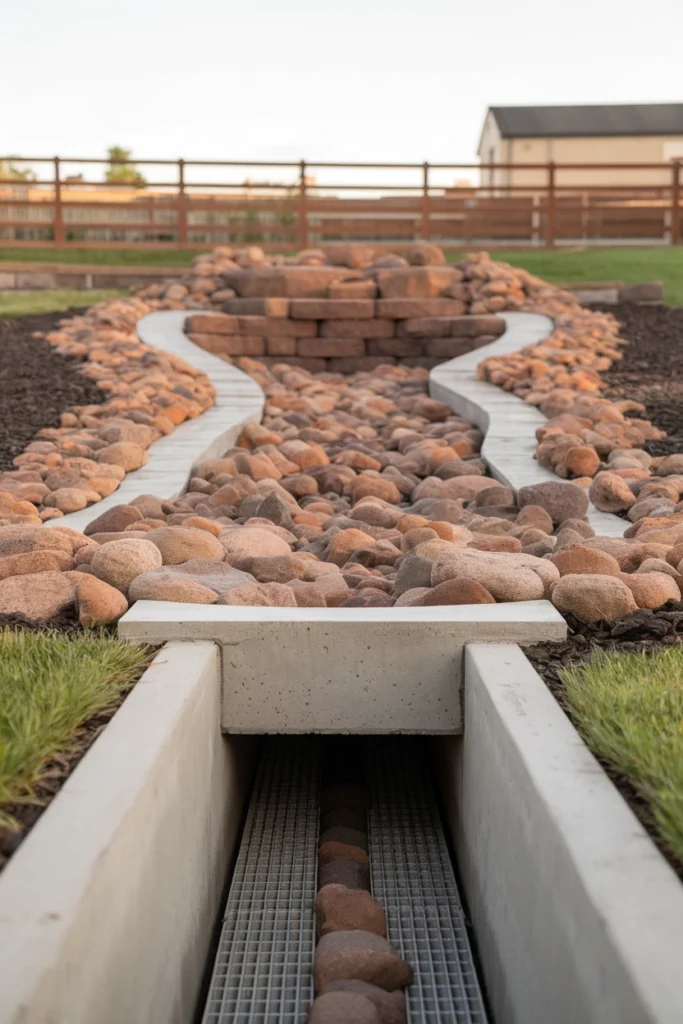
Make the most of natural rainfall by installing rain barrels or designing a dry stream bed to redirect water to your garden.
Capturing rainwater not only lowers your water bills but also reduces stormwater runoff, which can cause erosion and flooding.
Use the harvested rain to irrigate your plants, ensuring they get fresh, chemical-free water while promoting a more sustainable garden setup.
20. Plan with Your Local Climate in Mind
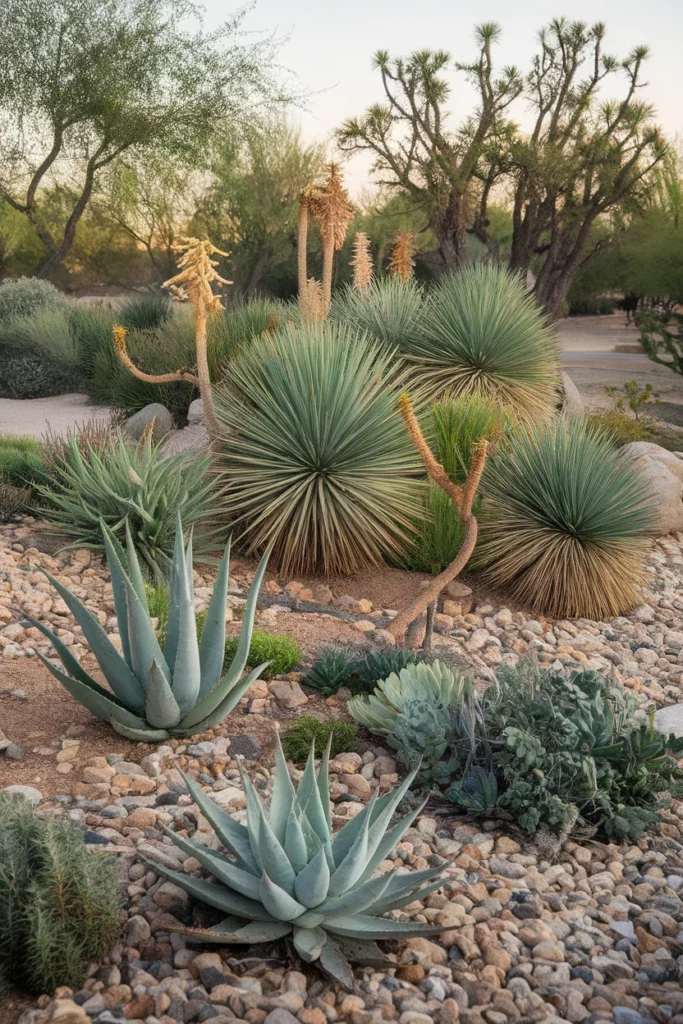
Before you start planting, take the time to research your USDA hardiness zone, soil type, and local climate conditions.
Choosing plants suited to your region ensures they’ll thrive with minimal intervention, saving you time, water, and other resources.
By working with nature instead of against it, you’ll create a garden that’s both productive and low-maintenance, perfectly tailored to your environment.
21. Create Microclimate Gardens

Strategically plant tall shrubs or install windbreaks to create protected microclimates in your yard.
These sheltered areas allow you to grow slightly more tender plants with less maintenance while reducing water evaporation and protecting smaller plants from harsh winds.
22. Install Living Walls or Vertical Gardens

Use drought-tolerant plants like sedums or air plants in wall-mounted planters or trellises.
Vertical gardens maximize growing space without expanding ground maintenance, and they’re perfect for small yards or urban settings where horizontal space is limited.
23. Design with Seasonal Succession Planting
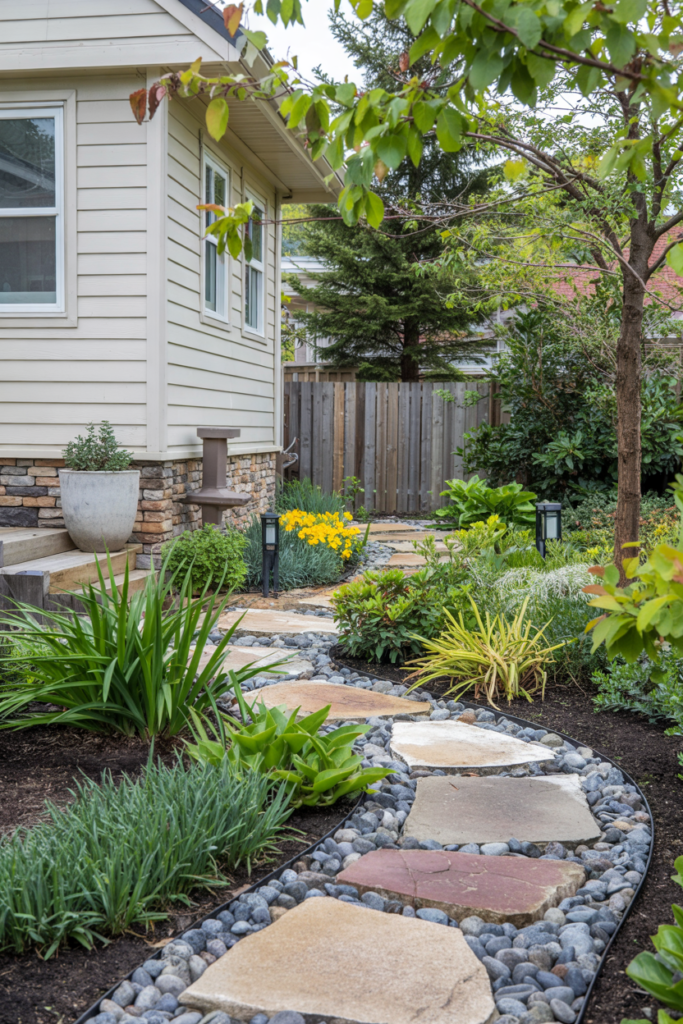
Choose plants that naturally transition through seasons without intervention—like spring bulbs followed by summer perennials that emerge as bulbs die back.
This creates continuous interest while eliminating the need to replant or rearrange seasonally.
24. Incorporate Architectural Plants as Living Sculptures
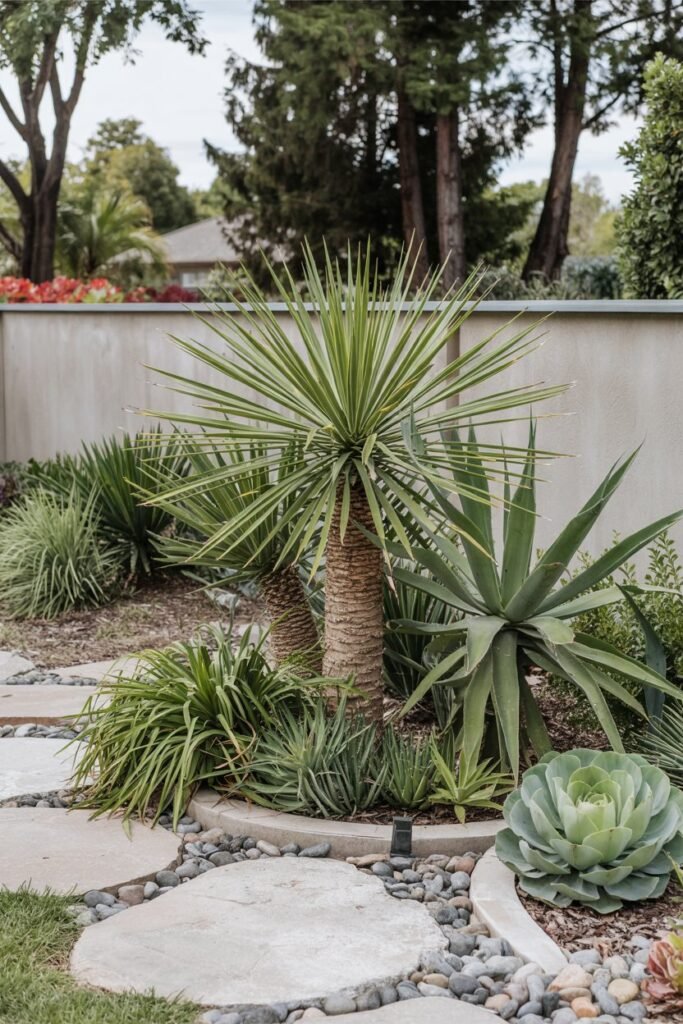
Use structurally interesting plants like yucca, ornamental cabbage, or architectural ferns as natural focal points.
These statement plants provide year-round interest and eliminate the need for decorative elements that require upkeep or seasonal replacement.
25. Build Permeable Hardscaping
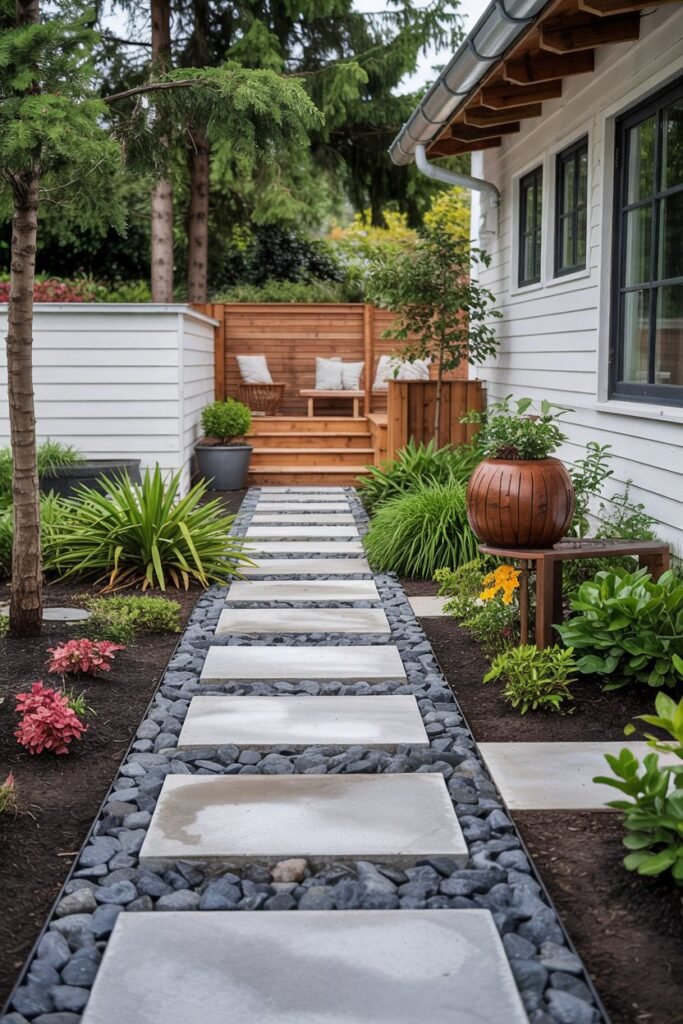
Instead of solid concrete, use permeable pavers, gravel, or decomposed granite for pathways and patios.
These materials allow rainwater to soak through naturally, reducing runoff while requiring less maintenance than traditional sealed surfaces.
26. Establish Pollinator Meadows
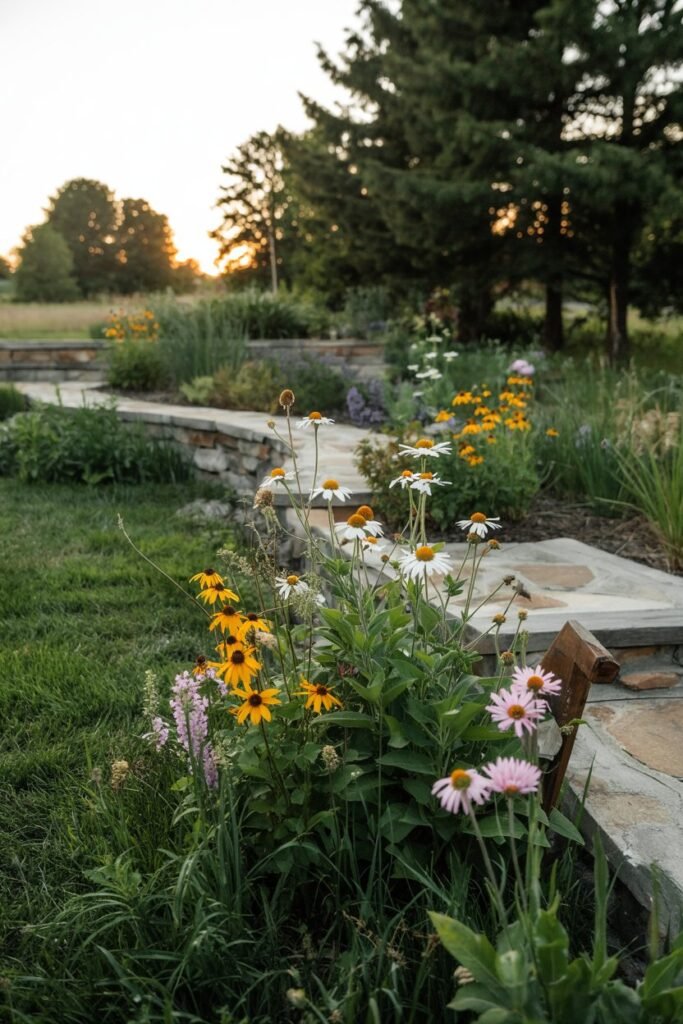
Dedicate sections of your yard to wildflower meadows using native seed mixes.
Once established, these areas require only annual mowing and provide habitat for beneficial insects while eliminating regular lawn maintenance.
27. Use Container Groupings Strategically
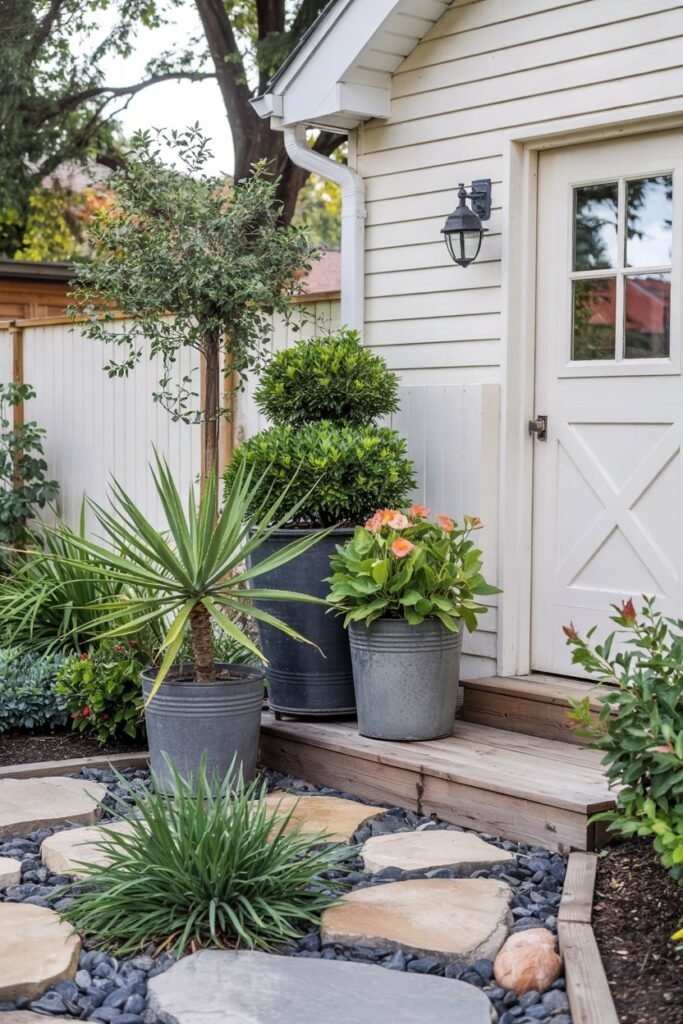
Create movable garden displays with large, weather-resistant containers planted with drought-tolerant combinations.
This allows you to refresh your landscape design seasonally without replanting entire beds.
28. Install Automated Landscape Lighting
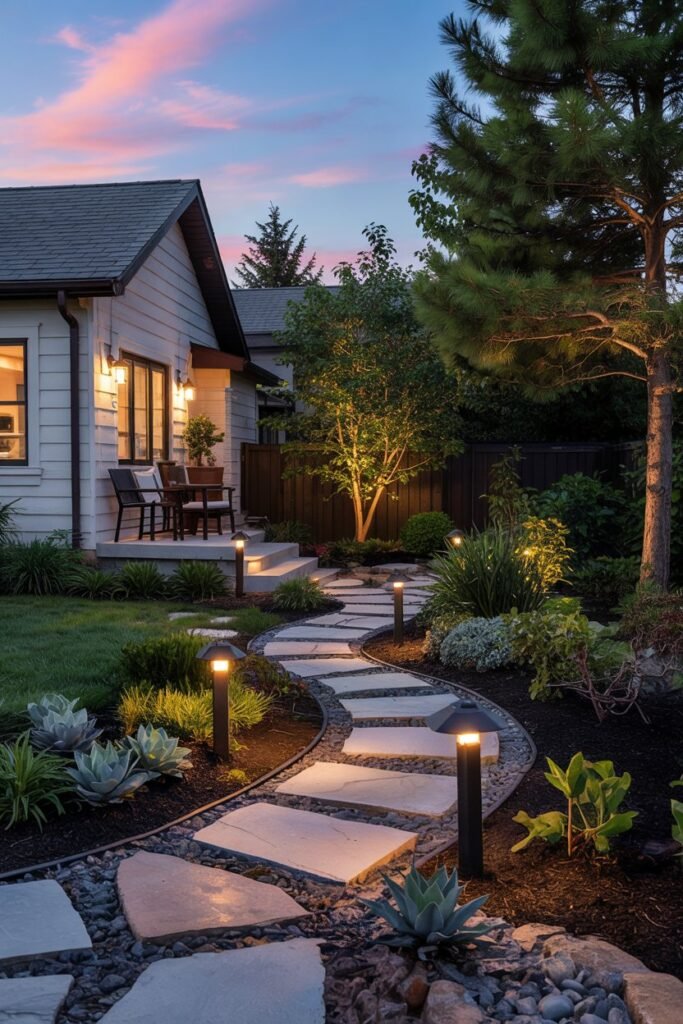
Choose solar-powered or LED landscape lighting with timers and sensors.
These systems highlight your garden’s best features year-round while requiring minimal maintenance compared to traditional wired lighting systems.
29. Design with Texture Rather Than Color
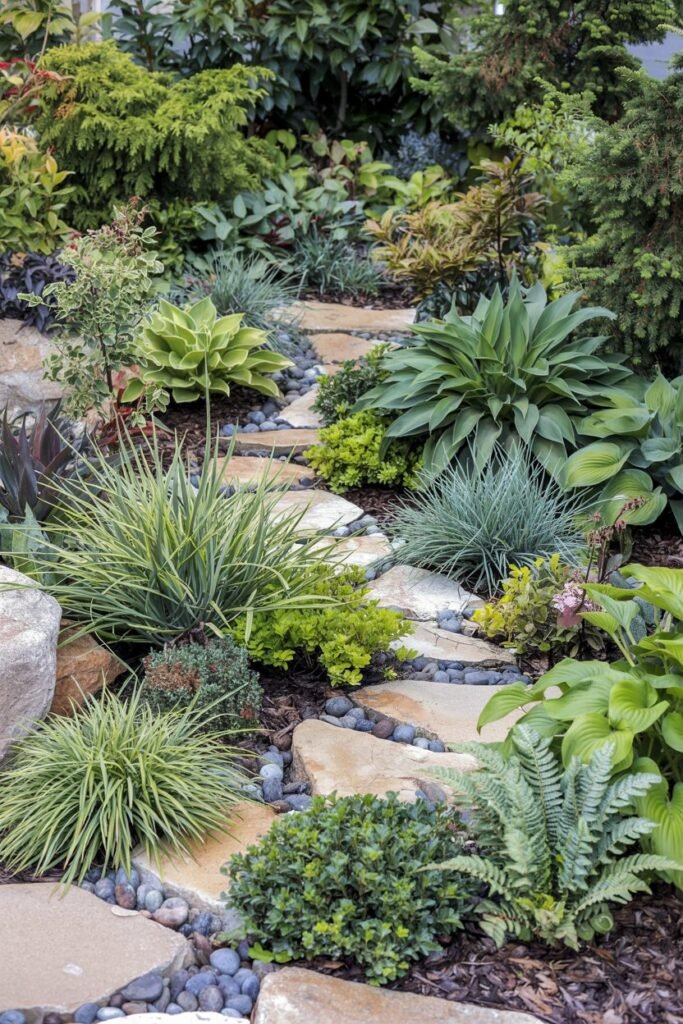
Focus on plants with interesting bark, foliage shapes, or architectural forms rather than those requiring deadheading or frequent care to maintain blooms.
Think ornamental grasses, hostas, ferns, and plants with variegated or silver foliage.
30. Create Self-Maintaining Edge Zones
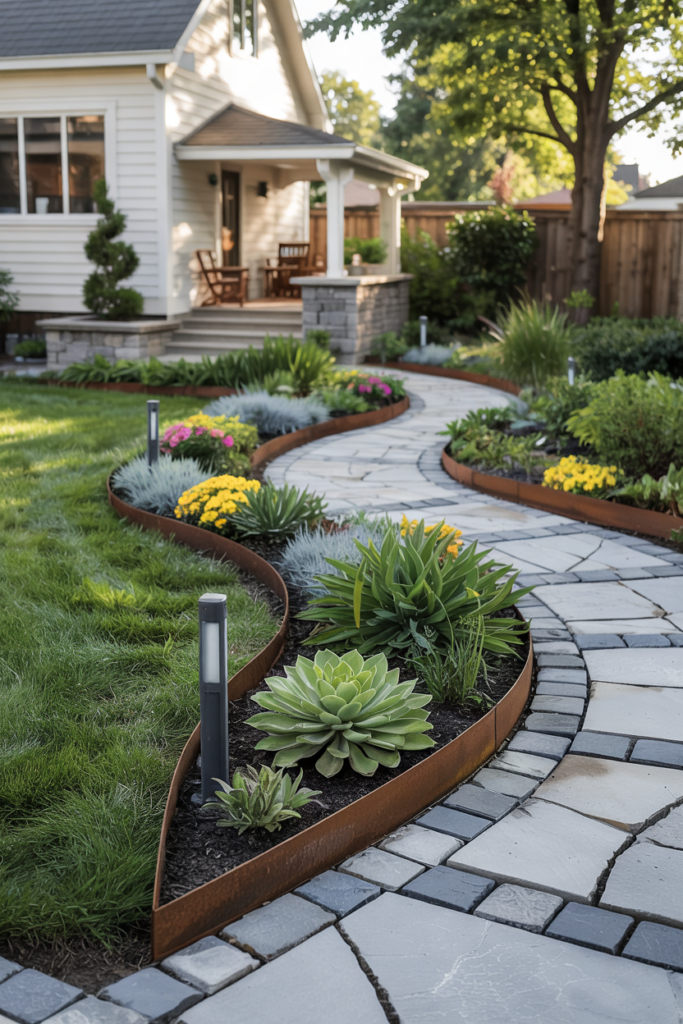
Install permanent edging materials like steel, stone, or concrete borders around beds and pathways.
These create clean lines that prevent grass encroachment and eliminate the need for regular edge trimming while giving your landscape a polished appearance.
These additional ideas focus on working with natural systems, using smart design principles, and choosing elements that become more beautiful and functional over time with minimal intervention.
FAQs
How do you start transitioning to a low maintenance yard?
Begin by assessing your current landscape. Remove sections of turf, replace high-maintenance plants, and start adding hardscape and native plants in phases.
What are the best low maintenance plants for your area?
The answer depends on your region. Native plants are always a solid choice, as are drought-tolerant perennials, ornamental grasses, compact shrubs, and groundcovers. Your local nursery or extension service can provide tailored advice.
How can you keep your landscape eco-friendly and low maintenance?
Use mulches, minimize lawn areas, plant natives, set up automatic irrigation, and avoid chemicals. These steps reduce water use, support pollinators, and make your yard easier to manage.
Conclusion
With these low maintenance landscape ideas, you can build a yard that’s beautiful, sustainable, and tailored to your lifestyle.
Whether you substitute grass with striking hardscape or fill borders with carefree perennials, these designs reward you with more free time and less hassle.
For further inspiration, consult your local garden center about the best plants for your climate or connect with a landscape designer who specializes in low-maintenance gardens.
The key is to start small, tackle one project at a time, and enjoy every step of your landscape transformation.
